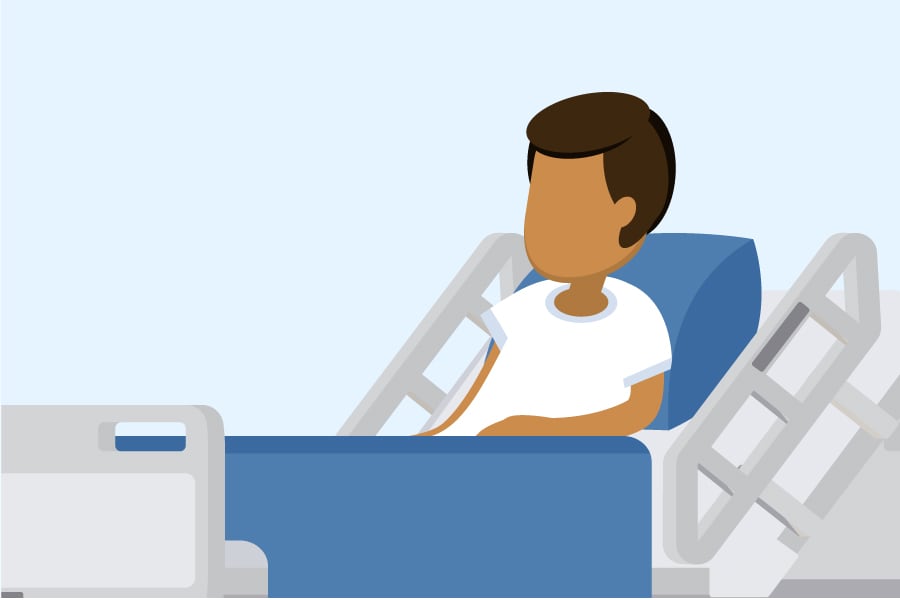Invasive Candidiasis Risk & Prevention
Groups at risk for invasive candidiasis

People who are at high risk for developing invasive candidiasis include those who:1
- Have spent a lot of time in the intensive care unit (ICU)
- Have a central venous catheter
- Have a weakened immune system (for example, people on cancer chemotherapy, people who have had an organ transplant, and people with low white blood cell counts)
- Have recently had surgery, especially multiple abdominal surgeries
- Have recently received lots of antibiotics in the hospital
- Receive total parenteral nutrition (food through a vein)
- Have kidney failure or are on hemodialysis
- Have diabetes
- Are pre-term babies
People who inject drugs are also at risk for invasive candidiasis, especially for bloodstream infections, heart valve infections, and bone and joint infections.6
Is invasive candidiasis contagious?
Invasive candidiasis doesn’t spread directly from person to person. However, some species of the fungus that causes invasive candidiasis normally live on skin, so it’s possible that Candida can be passed from one person to another and possibly cause an infection in someone who is at high risk.2,3
Preventing invasive candidiasis
- Antifungal medication. If you’re at high risk for developing invasive candidiasis, your healthcare provider may prescribe antifungal medication to prevent the infection. This is called “antifungal prophylaxis,” and it is typically recommended for:4
- Some organ transplant patients
- Certain patients in the intensive care unit (ICU)
- Patients who are on certain types of chemotherapy or have low white blood cell counts (neutropenia)
- Patients who have a stem cell or bone marrow transplant and have low white blood cell counts (neutropenia)
- Some doctors may also consider giving antifungal prophylaxis to very low birth weight infants (less than 2.2 pounds) in nurseries with high rates of invasive candidiasis.
- Be a safe patient. There are some actions that you can take to help protect yourself from infections, including:
- Speak up. Patients and caregivers can ask whether a central venous catheter (central line) is needed, and if so, how long it should stay in place. Tell your doctor if the skin around the catheter becomes red or painful.
- Keep hands clean. Be sure everyone cleans their hands before touching you. Washing hands can prevent the spread of germs.
- For more tips, please see CDC’s webpage about What You Can Do to Be a Safe Patient.
- Healthcare providers can follow CDC-recommended infection control practices every time they work with a central line. For more prevention information, please visit CDC’s Healthcare-Associated Infections website.
References
- Kullberg BJ, Arendrup MC. Invasive candidiasisexternal icon. N Engl J Med 2015; 373:1445-1456.
- Pappas PG, Kauffman CA, Andes DR, Clark CJ, Marr KA, Ostrosky-Zeichner L, et al. Clinical practice guideline for the management of candidiasis: 2016 update by the Infectious Diseases Society of Americaexternal icon. Clin Infect Dis. 2016;62:e1-50.
- Pfaller MA, Diekema DJ. Epidemiology of invasive candidiasis: a persistent public health problemexternal icon. Clin Microbiol Rev. 2007 Jan;20(1):133-63.
- Strausbaugh LJ, Sewell DL, Ward TT, Pfaller MA, Heitzman T, Tjoelker R. High frequency of yeast carriage on hands of hospital personnelexternal icon. J Clin Microbiol. 1994 Sep;32(9):2299-300.
- Yildirim M, Sahin I, Kucukbayrak A, Ozdemir D, Tevfik Yavuz M, Oksuz S, et al. Hand carriage of Candida species and risk factors in hospital personnelexternal icon. Mycoses. 2007 May;50(3):189-92.
- Zhang AY, Shrum S, Williams S, Petnic S, Nadle J, Johnston H, et al. The changing epidemiology of candidemia in the United States: injection drug use as an increasingly common risk factor – active surveillance in selected sites, United States, 2014–17external icon. Clin Infect Dis. 2019 Nov.
Page last reviewed: November 18, 2020